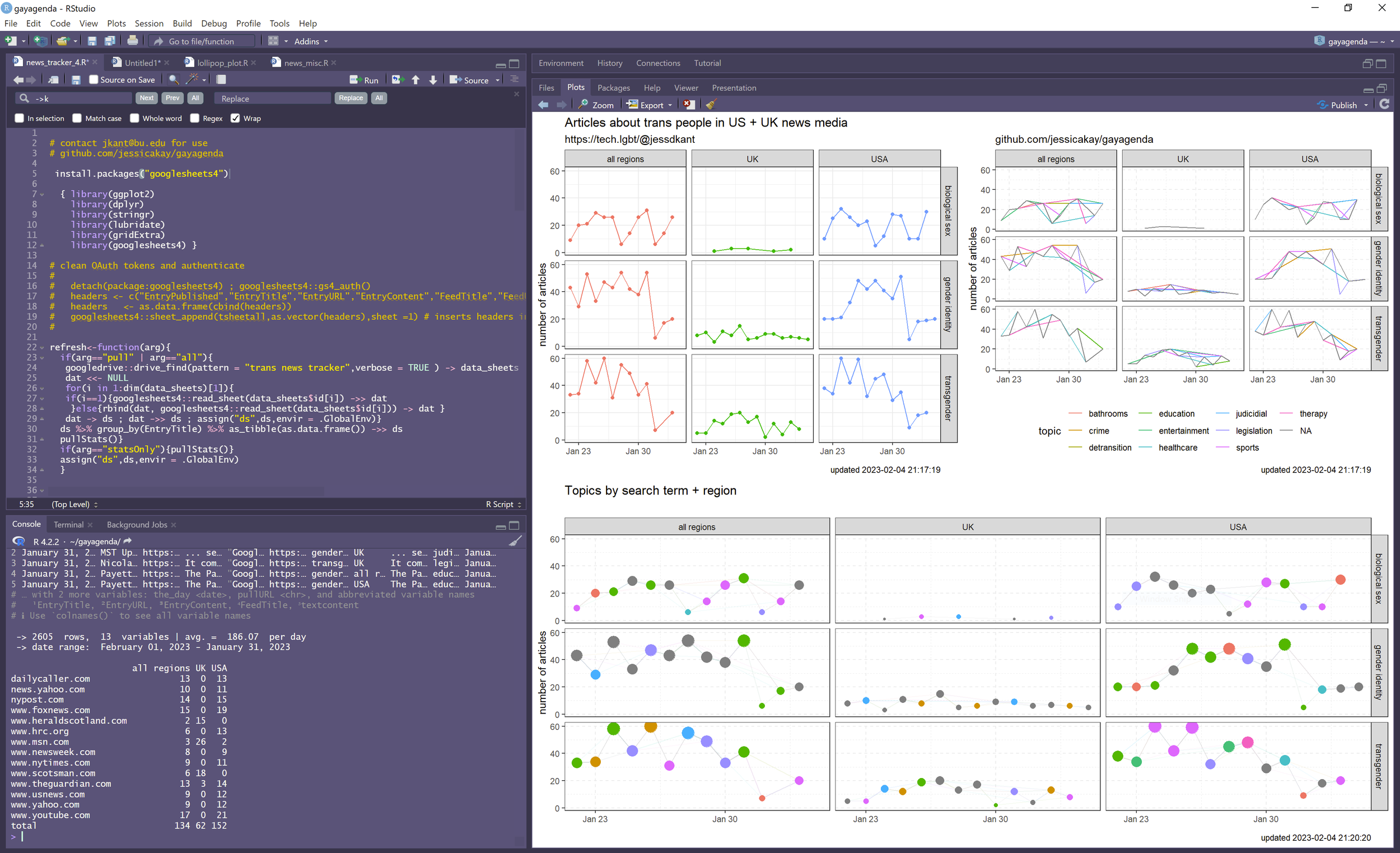getting the tracker online
The github repo is open!
As usual, the trans news tracker, started as one of those “I wonder if…” projects. Partially inspired by the potential imminent demise of twitter, and having recently started using automation platform IFTTT for tracking the hundreds of anti-LGBTQ bills sweeping the country, I wanted to see how easy it would be to create a dashboard that would visualize the discourse in real-time.
The project is currently hosted on github, but I hope that soon it will be a self-hosted dashboard that users can visit to get a lay of the land without having to subject themselves to wading into the fray of social media.





Part of this is also inspired by a philosophy I hold very dear as someone who works in trans care. As a community, we have far too many well-meaning allies on the sidelines, a definitive paucity of whom are actively working to defend trans lives.
As more and more such allies within the healthcare and mental health professions seek to find ways to support trans people, the burden of keeping such providers informed has been predictably displaced back onto trans people.
This is exacerbated by the sheer volume of the attacks we’re now seeing. In a single day as many as 25 anti-trans bills may be heard during the legislative session, yet somehow only a handful of bills are widely known at any time, with LGBTQ rights organizations well past capacity for keeping the general public informed.
Part of this is informed by the slightly inexplicable fact that major news outlets seem embroiled in the debate on trans lives— particularly our healthcare and our rights to public spaces— in turn only serving to fan the flames of anti-trans violence. To see this, one only has to compare coverage of anti-trans bills to the relative mention of US states in google searches relating to gender.
Tracking which states are getting coverage
One use-case has been to see which states are getting the attention in the top search results on google news. The preliminary results are not promising: states with the worst legislation are barely covered, instead deferring to fake outrage and “scandal” where a single non-event like a trans person using the bathroom and minding their own business (gasp!) takes up 25 top news stories in a day.
How does it work?
I set several Google News alerts to three keywords, each chosen for their relative frequency in articles with a given valence. While up until recently “transgender” was a positive or neutral term favored by center and liberal news outlets, terms like “biological sex” has been favored by the UK media attempting to focus on major arguments like prisons and bathrooms. A third keyword “gender identity” was chosen as being neutrally valanced — although this too appears to be changing.
Each google alert feeds directly to RSS, split between three regional specifiers: UK, US and “any region”. The RSS feeds are monitored by IFTTT, which adds each new entry to a google sheet. The sheets are then parsed using a private OAuth token and read into R as a single dataframe, with graphics rendered by ggplot.
One challenge has been that Sheets limits to 2000 observations per sheet, therefore the R code that runs the visualization parses and joins the sheets into a single organized dataframe.
Color coding on the sheets themselves is done by conditional formatting. It’s fun to watch the applet work in real-time as entries are added and color coded accordingly.
View a sample spreadsheet here: google sheets.
More soon!

